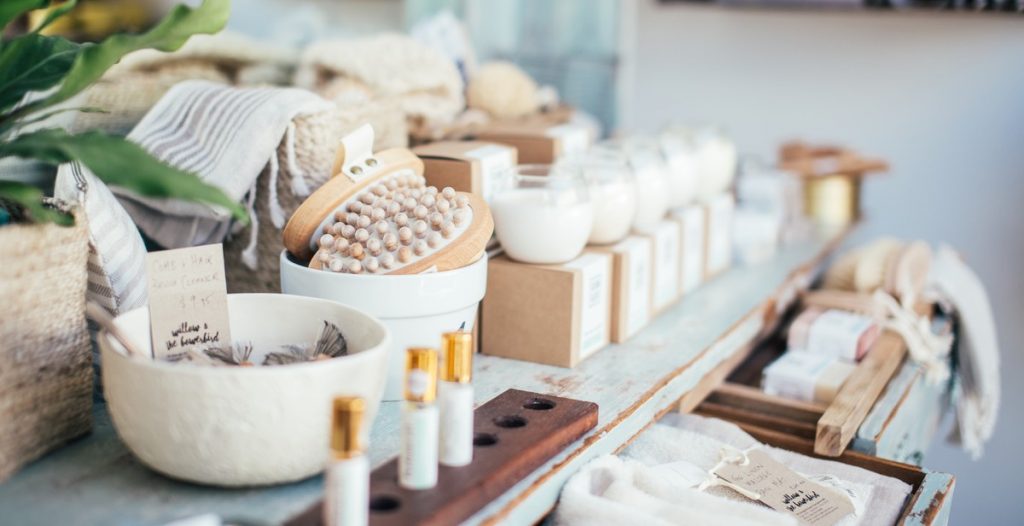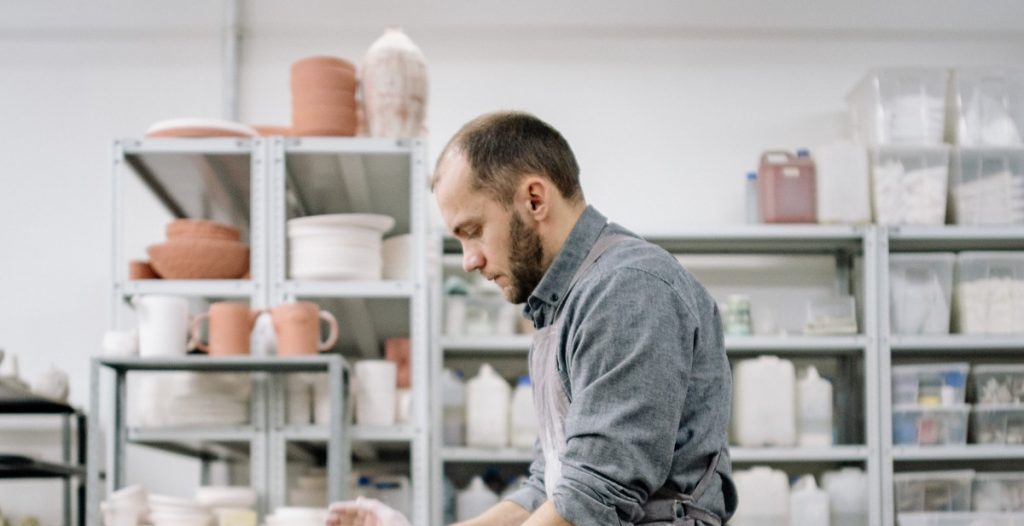How do you make your own candles using natural dyes and scents?
If you’re a candle lover, you know that there’s nothing better than lighting a beautiful candle to create a cozy and relaxing atmosphere in your home. However, many store-bought candles are loaded with harmful chemicals and artificial fragrances that can be harmful to your health and the environment.
That’s why making your own candles using natural dyes and scents is a great alternative. Not only is it a fun and creative hobby, but it also allows you to control the ingredients and create candles that are both beautiful and safe to burn.
Why make your own candles?
Making your own candles has several benefits:
- You can choose your own scents and colors to create unique candles that reflect your personal style and preferences.
- You can avoid harmful chemicals and artificial fragrances that can be found in many store-bought candles.
- You can save money by making your own candles instead of buying expensive, high-end candles.
- You can give your homemade candles as gifts to friends and family, making them a thoughtful and personalized present.
In this article, we’ll show you how to make your own candles using natural dyes and scents, so you can enjoy all the benefits of candle-making while avoiding the harmful ingredients found in many store-bought candles.

Choosing Natural Dyes
When it comes to making candles using natural dyes, it is important to choose the right kind of dye to achieve the desired color. Natural dyes are derived from plant, animal or mineral sources and are free from harmful chemicals. They are eco-friendly, sustainable and safe for both the maker and the user.
What are natural dyes?
Natural dyes are colorants that are derived from natural sources such as plants, vegetables, fruits, insects, and minerals. These dyes have been used for centuries to color textiles, food, and cosmetics. With the growing awareness of the harmful effects of synthetic dyes, natural dyes have gained popularity in recent years. They are non-toxic, biodegradable, and renewable.
Types of natural dyes
There are several types of natural dyes that can be used to color candles. Some of the most popular ones include:
- Plant-based dyes: These dyes are derived from various parts of plants such as leaves, roots, bark, and flowers. Examples include turmeric, indigo, and beetroot.
- Animal-based dyes: These dyes are derived from animal sources such as insects, shellfish, and even animal dung. Examples include cochineal, which is derived from the cochineal bug, and shellfish purple, which is derived from snails.
- Mineral-based dyes: These dyes are derived from minerals such as clay, ochre, and iron oxide. They are often used to create earthy tones.
Factors to consider when choosing natural dyes
When choosing natural dyes for candle making, there are several factors to consider:
| Factor | Description |
|---|---|
| Color | Consider the color you want to achieve and choose a dye that will give you the desired shade. |
| Lightfastness | Consider how the color will hold up over time and exposure to light. |
| Mordant | Some natural dyes require a mordant to help the color adhere to the wax. Consider which mordant will work best with the dye you choose. |
| Availability | Consider the availability and cost of the dye. Some natural dyes may be harder to find or more expensive than others. |
By considering these factors, you can choose the right natural dyes to create beautiful, eco-friendly candles that are safe for you and the environment.

Selecting Scents
Choosing the right scent for your candles can be a daunting task. However, using natural scents can provide numerous benefits that synthetic scents can’t match. Here are some of the benefits of using natural scents in your candles:
- Natural scents are free from harmful chemicals that can be found in synthetic scents.
- Natural scents are eco-friendly and sustainable.
- Natural scents are often associated with aromatherapy and can provide numerous health benefits such as reducing stress, promoting relaxation, and improving mood.
Types of Natural Scents
There are various types of natural scents that you can use to create your candles:
- Essential oils – These are highly concentrated oils extracted from plants that provide natural scents and can also provide health benefits.
- Herbs and spices – These can be used to provide natural scents and add texture to your candles.
- Flowers – These can be used to provide natural scents and add color to your candles.
How to Choose the Right Scent
Choosing the right scent for your candles can be overwhelming, but here are some tips to help you:
- Consider the occasion – If you are making candles for a special occasion, consider scents that are associated with the occasion. For example, lavender is often associated with relaxation and can be perfect for a spa day.
- Consider the season – Use scents that are associated with the season. For example, peppermint is often associated with the winter season.
- Consider the mood – Consider the mood you want to create with your candles. If you want to create a romantic mood, consider using scents like rose or jasmine.
- Consider the blend – You can also blend different scents to create a unique scent that suits your preference.
By considering these factors, you can choose the right scent for your candles and create a unique and enjoyable experience for yourself and your loved ones.

Materials and Equipment
List of Materials Needed
Before making your own candles using natural dyes and scents, you will need to gather the following materials:
- Wax – You can use soy wax, beeswax, or any other natural wax.
- Natural dyes – You can use herbs, spices, or flowers to create natural dyes.
- Natural scents – You can use essential oils or natural fragrance oils to add scent to your candles.
- Candle wicks – You will need to purchase candle wicks that are the appropriate size for your candle jars.
- Candle jars – You can use any type of heat-resistant container to hold your candles.
- Candle thermometer – You will need a thermometer to ensure that the wax is at the correct temperature.
- Candle pouring pitcher – A pouring pitcher will make it easier to pour the wax into your candle jars.
- Candle making kit – You can purchase a candle making kit that includes all of the materials you need to make candles.
Where to Purchase Materials
You can purchase all of the materials needed to make your own candles using natural dyes and scents at your local craft store or online. Some popular online retailers for candle making supplies include:
- Amazon
- Candle Science
- Michaels
- Wax & Wick
Equipment Needed
In addition to the materials listed above, you will also need the following equipment:
| Candle thermometer | A thermometer will ensure that the wax is at the correct temperature. |
| Candle pouring pitcher | A pouring pitcher will make it easier to pour the wax into your candle jars. |
| Candle making kit | You can purchase a candle making kit that includes all of the equipment you need to make candles. |
It is also recommended to have a double boiler or a large pot and a smaller pot to melt the wax. Additionally, you may want to have a heat gun or a hair dryer on hand to smooth out any imperfections on the surface of your candles.

Step-by-Step Guide: How to Make Your Own Candles Using Natural Dyes and Scents
Preparing the Work Area
The first step in making your own candles is to prepare your work area. Choose a clean and flat surface to work on, and cover it with newspaper or a plastic tablecloth to protect it from any spills or drips. Make sure you have all the necessary tools and materials at hand, including:
- Candle wax
- Candle wicks
- Natural dyes
- Natural scents
- Double boiler or melting pot
- Thermometer
- Metal spoon or stirring stick
- Candle molds or containers
Melting the Wax
Once your work area is set up, it’s time to melt the wax. Use a double boiler or melting pot to heat the wax to the recommended temperature, usually around 180-200°F (82-93°C). Use a thermometer to monitor the temperature and avoid overheating the wax, as this can cause it to lose its scent and color. Stir the wax occasionally with a metal spoon or stirring stick to ensure even melting.
Adding Natural Dyes and Scents
Once the wax has melted, it’s time to add your natural dyes and scents. Use only natural ingredients, such as beeswax, soy wax, essential oils, and natural colorants like beet juice or turmeric. Add the dyes and scents gradually, stirring gently until the desired color and scent are achieved. Be careful not to add too much, as this can affect the quality and burn time of the candle.
Pouring the Wax
When your wax is ready, it’s time to pour it into your chosen candle molds or containers. Carefully pour the wax into the molds, leaving a bit of space at the top for the wick. Insert the wick into the center of the candle, making sure it is straight and centered. Allow the wax to cool and solidify completely before continuing.
Trimming the Wick
Once the wax has hardened, it’s time to trim the wick. Use scissors to cut the wick to the desired length, usually around 1/4 inch (0.6 cm). This will ensure a clean and even burn, and prevent the wick from smoking or flickering. Your natural candle is now ready to use and enjoy!

Tips and Tricks for Making Your Own Candles with Natural Dyes and Scents
Storing Your Candles
- Store your candles in a cool, dry place away from direct sunlight and heat sources.
- Keep your candles out of reach of children and pets.
- If storing your candles for long periods of time, wrap them in plastic wrap to prevent dust and dirt from accumulating on the surface.
- Label your candles with the date of creation and the type of wax, dye, and scent used.
Safety Precautions
- Always use a double boiler or a wax melting pot to melt your wax. Never heat wax directly on a stove or in a microwave.
- Use protective gloves and eyewear when handling hot wax or when pouring the wax into the candle molds.
- Keep a fire extinguisher nearby in case of emergencies.
- Never leave your candles unattended while they are burning.
Troubleshooting Common Issues
| Issue | Solution |
|---|---|
| Candles are tunneling or not burning evenly | Trim the wick to ¼ inch and allow the candle to burn for at least 1 hour per inch of diameter to create a full melt pool. |
| Candles are cracking or have air bubbles | Heat the wax to a higher temperature and pour it slowly into the mold to prevent air pockets from forming. |
| Candles have a rough or uneven texture | Stir the wax gently and continuously while it is melting and pour it slowly into the mold to create a smooth surface. |
By following these tips and tricks, you can create beautiful and fragrant candles using natural dyes and scents while also ensuring safety and longevity.



